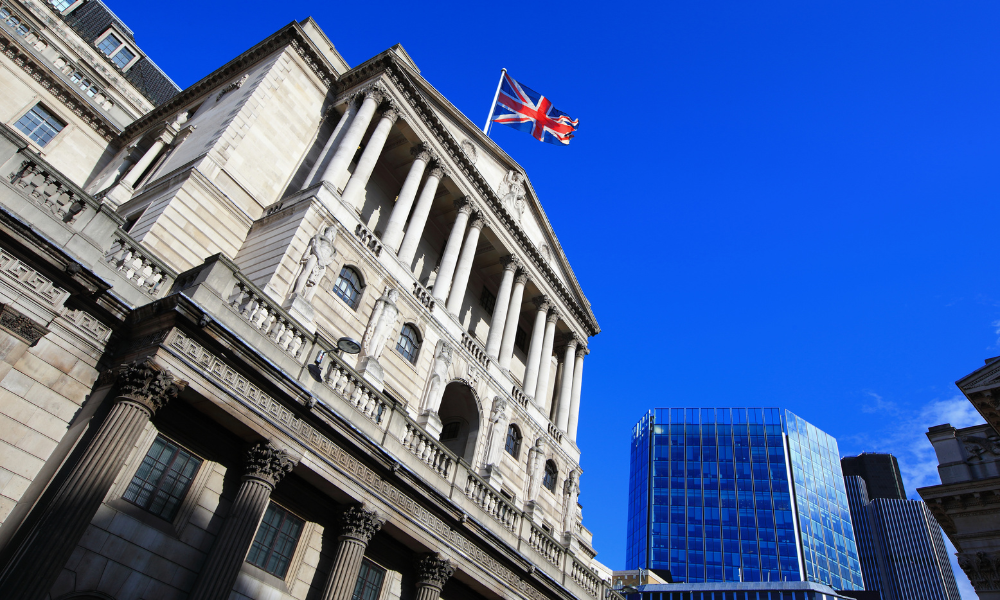Prediction interest rates could even hit 3.25% by mid-2025

Maybe it was Brexit – or maybe it’s work from home? Or it could have been Rachel Reeves’ budget. Whatever the reason, things are not looking that good for the UK economy.
Latest forecasts have growth at 1% (or even lower) in 2025, prompting predictions of significant interest rate cuts by the Bank of England. Analysts at Morgan Stanley have downgraded their growth expectations, revising their projection from 1.4% to 0.9%. This latest estimate is even more pessimistic than the average forecast of 1.3% predicted by many City analysts and sharply contrasts with the Office for Budget Responsibility’s 2% prediction.
In light of this worsening economic outlook, Morgan Stanley says that it anticipates that the Bank of England will prioritise stimulating economic activity over controlling inflation – in line with the new government’s announced focus on growth. It predicts that interest rates will fall from the current 4.75% to 3.5% by the end of 2025, with the first reduction of 25 basis points expected at the monetary policy committee meeting on February 6. Goldman Sachs has issued an even bolder forecast, suggesting rates may drop to 3.25% by mid-2026.
In its analysis, global investment bank Goldman Sachs said: “We believe that markets are pricing too few rate cuts. While it is possible that the Bank of England will slow the pace of cuts if underlying inflation fails to make progress, we believe that a step-up to a sequential pace of cuts in response to weaker demand is actually more likely.”
Morgan Stanley is happy to blame Starmer’s government’s policies for making things worse – it credits the downturn to stagnant business confidence and weak hiring intentions, exacerbated by the government’s recent tax policies, including a £25 billion rise in employers’ National Insurance contributions. The Wall Street bank remarked that “after a rather strong start to 2024, the economy likely flat-lined in the last six months”. Demand for labour, already subdued, deteriorated further following the measures introduced in the October budget, with analysts noting that the “mood music has deteriorated meaningfully since the summer.”
Meanwhile, UK government bond yields have also experienced significant volatility. Following sharp rises early in the year, yields on five-year gilts have since returned to their starting levels. Although fiscal credibility remains under scrutiny after the 2022 Truss budget, broader global factors are also influencing market behaviour. According to a senior economist at Pimco, “bond markets in the UK may be more sensitive to fiscal credibility, but fiscal sustainability does not differ significantly from other peers, such as France.”
Despite a moderation in inflation, which now hovers close to the Bank of England’s target of 2%, economic growth has been lacklustre since the summer. Labour demand has declined, and productivity growth remains subdued, at just 0.5% annually since the pandemic began. The BoE has reiterated its intention to reduce interest rates, though its ultimate target rate remains uncertain.
While markets expect only modest cuts, Pimco’s internal models suggest a neutral interest rate in the range of 2% to 3%. At least one BoE rate setter is also pushing for more aggressive interest rate cuts.
“It makes sense to cut rates pre-emptively to take out a little insurance against this change in the balance of risks,” said Alan Taylor a member of the Bank’s Monetary Policy Committee just over a week ago.
This outlook reflects underlying concerns about fiscal policy and inflation throughout the UK’s business community. Though recent tax hikes may put upward pressure on prices, such adjustments are generally treated as temporary by central banks. Nonetheless, market scepticism lingers, with investors wary of potential fiscal policy changes that could jeopardise stability.



